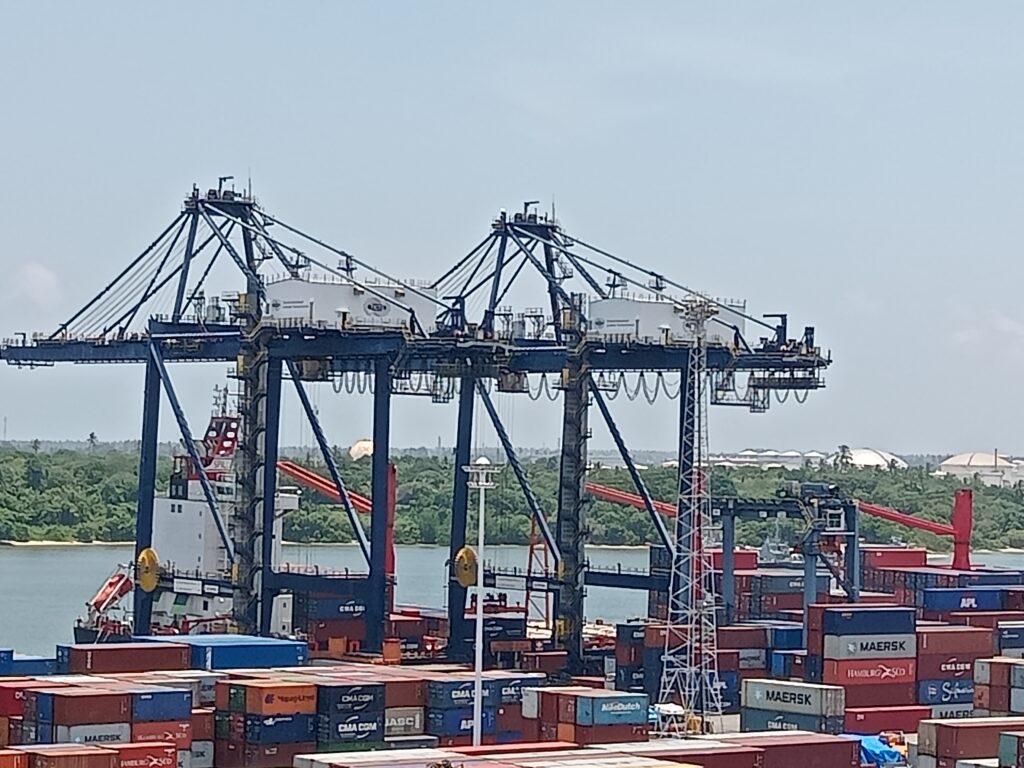According to World Trade Organization (WTO) November report, global trade in goods (imports and exports ) stood at $5.6 billion for Q2,2021. It also reports the trade in services stood at $1.5 billion in the same period. These figures were reported when the World was still fighting the Covid-19 Pandemic.
According to the Global Trade Finance Market’s report, about 80 to 90% of world trade relies on trade finance, which includes trade credit and guarantees. It is therefore important to understand trade finance and international trade. In this post, we discuss just that.
What is Trade Finance in international trade?
The term ‘Trade Finance’ refers to instruments used by importers and exports. It has four pillars in serving the needs of the players in international trade. They include
Risk mitigation
Importers carry the risk of nonpayment that is not desirable to the exporter. Exporters carry the risk of non-performance that is not desirable to the buyer. Trade finance products are used to mitigate these risks.
Payment
Trade finance facilitates the movement of funds internationally.
Financing
Both importers and exporters have funding gaps that trade finance steps to solve.
Information
Logistics within international trade can be sophisticated and time-consuming. Importers, exporters, banks, and even insurance companies are keen on obtaining timely information at every stage of the movement of goods.
Benefits of Trade Finance in international trade
#1: Managing and improving cash flow: cashflows can be unlocked through trade products to support both buyers and suppliers.
#2: Flexibility to offer competitive terms to customers: Sellers can offer extended terms to buyers matching their cash conversion cycles. Buyers can accept shorter payment terms in order to benefit from higher discounts.
#3: Help increase turnover: Trade finance facilitates buying of more stocks, thereby facilitating higher turnover.
#4:Solution for medium-term working capital: procurement of machinery and other capital expenses can be painful and cumbersome. The terms offered include high capital contribution by the buyers. There are trade solutions that make this process less painful.
#5:Managing supply chains: Covid-19 Pandemic has shown us the importance of supply chains and just how much the world is interconnected. A robust trade finance ecosystem within the supply chain ensures that every player received the inputs they require in a timely manner.
#6: Offer non-balance sheet solutions: As the companies grow, their balance sheets can not support the funding required. They will rely on specialized solutions such as ‘structured trade and commodity finance ‘
#7: Offer Risk mitigation: We have mentioned the risks facing the importers and exporters in the introduction above.
Who Benefits from trade finance?
Beneficiaries include Small and Medium Enterprises (SMEs), Corporate Clients and State-Owned Enterprises, and National Governments. Examples of SMEs or Corporate clients using trade finance include opening letters of credit or asking for bank guarantees from a bank. Governments likewise use them for contracts through interactions with tender guarantees.
What are the methods of payment in trade finance?
In international trade, it is important that the transfer of money (payments) is seamless. Payments must be handled in such a way that they reach the sellers without delay and the net amount available to him predictable. This develops trust between the importer and exporter, paving the way for recurring business. There are 4 types of payments
#1. Letters of Credit :
A letter of credit(L/c) is an undertaking by the issuing bank on behalf of the applicant(buyer/importer), to the beneficiary (seller/exporter) that they will be paid. However, this payment will be subject to the beneficiary presenting documents confirming /evidencing that the terms and conditions of the letter of credit have been met.
You can look at an L/c as a payment guarantee to the beneficiary by leveraging on the creditworthiness of the issuing bank and or that of the confirming bank. At the same time, an L/c provides assurance to the applicant that the beneficiary will not be paid unless they present complying documentation.
#2. Documentary Collection
This is an arrangement between a buyer(importer) and the seller(exporter) to use banks for control of documents. The seller will export the goods and present shipping documents together with financial documents to his bank(remitting bank). Without these documents, the buyer can not clear the goods.
The remitting banks will then the documents to the buyer’s bank(collecting bank) with instructions to release the same against payment or acceptance. Payment will then be collected and transmitted to the seller through the remitting bank. This method of payment is less expensive compared to letters of credit.
#3. Open Account
Under the open account method, the importer makes payment to the seller after goods have been received. The terms of payment can be 30, 60, 90 or 120 days from an agreed event, such as the bill of lading date or from the invoice date.
This is clearly advantageous to the buyer since the seller takes the risk of nonpayment. Open account trading is usually a result of long-term relationships, trading between related entities, or where the buyer power is high. The exporter usually wants to push more sales and is likely to approach a bank for trade finance.
#4. Advance Payment :
This is the opposite of Open account transactions. The buyer is required to make payment to the seller before goods are shipped. Sellers love advance payment since the buyers take all the risks and would normally be willing to offer a discount.
The buyer will seek trade finance from the banks to support this payment method. Most transactions under advance payment are low-value, such as purchases from Alibaba. Recently, though, Alibaba has started offering terms of credit.
Types of Trade Finance Products
There are many financing gaps along the value chain of most industries that can be filled by trade finance products. Broadly speaking, they can be categorized as Pre-shipment, Pre-payment, Post-shipment, and Supply Chain Finance.
Pre-shipment finance
This is where the exporter access funds before shipping goods. We have discussed advance payment above. Pre-shipment trade finance is usually in the form of a trade loan, where the bank pays the exporter directly by creating a loan in the name of the importer. Repayment will come in when the importer has cleared the goods and sold them.
Usually, the performance risk of the exporter is expected to be significantly low for Pre-shipment to be accepted. The amount involved also needs to be very low. Otherwise, it will be in the interest of the importer to ask for some kind of risk mitigation, such as an advance payment guarantee.
Pre-payment finance
Pre-payment finance is a facility used by buyers to fund producers by paying for their output in advance. In essence, they are buying future supplies. This facility is repaid through the delivery of the relevant products. It is commonly used in commodities (soft and hard commodities) trade where producers have inherent problems of accessing credit facilities from banks or their countries have exchange controls.
This finance structure documentation includes a commercial contract and pre-payment agreement. Commercial contracts cover commercial aspects such as product, quality, price formula, place of delivery, and more. Pre-payment agreement includes details such as delivery schedule, period of repayment, interest margin, undertakings and presentations by suppliers, and more.
The major advantage here is that the supplier gets funding and that they have locked off-taker at a price formulation that works for them. On the other hand, the buyer gains the exclusive right to the product. Some structures can over up to 5 years of tenure.
Post-shipment finance
As the name suggests, the seller can access funds after they ship the goods. The buyer is allowed terms of credit for example 30 days, 60 days, or 120 days from the date of delivery. Sellers will need funding during this period, otherwise, they have to wait for the maturity date before they get paid.
Bank funding can assist the seller by accelerating these payments to be released within the shortest time after shipment. This can be done the through
Trade loans
These are short-term structured to match the cash conversion cycle of the seller. Repayment is expected from the proceeds of the credit sale.
Letters of credit
Through Usance L/cs, the beneficiary gets the goods and has a number of days before payment is due. This extended credit period is essentially post-shipment finance.
Receivables financing
Post-shipment finance can also be through receivables funding gaps. Once you sell on credit, you are left with a receivable asset that will be realized when funds hit your account. Funders can provide you with money by discounting the receivables.
Supply Chain Finance (SCF)
SCF is another interesting type of trade finance product. It is also referred to as Payable Finance. A Supply Chain Finance structure is initiated by the buyers (usually blue-chip companies) by inviting their suppliers to supply chain programs.
A supply chain finance program involves buyers, sellers, funders, and to some extent a 3rd party platform providers. Buyers want their suppliers to access competitive working capital as soon they supply them. That way, they are assured of a continued supply of inputs.
By leveraging on the good credit rating of the buyers and minimum commercial dispute possibilities, funders are willing to offer SCF to suppliers. Suppliers are onboarded in the supply chain proprietary system. Each time they invoice, the buyer has to accept it. This invoice is available for funding should the supplier want it.
SCF does not amount to borrowing by the supplier or the buyer. When funders are pricing SCF, they consider the credit rating of the buyer. This means that the suppliers end up being priced very competitively.
According to the World Supply Chain finance report 2022, SCF volumes reached $1.8 trillion in 2021. The report further notes that the highest growth was in Asia, followed by Africa. There is a general view that the SCF is set to keep growing as more companies understand the product.
Now let us look are risks in trade finance and international trade.
What are risks in trade finance and international trade?
Trade finance and indeed international comes with inherent risks that require to be mitigated against. Some risks have been there for ages, while some risks are emerging. Below are some of key risks and proposed mitigations.
#1. Counterparty risk
This is the risk of one party failing to honor their contractual obligations. The success of trade finance transactions is dependent on parties delivering on their obligations. Failure by one party will jeopardize the whole transaction.
This can be mitigated through several interventions. Firstly, you need to choose counterparties with good track record. Secondly, use instruments such letters of credit for risk mitigation. If the value of a trade finance transaction is large, then you can consider using Risk participation to distribute the risk among several financial participants.
#2. Foreign exchange risk
International trade by its nature means that there will be at least two currencies in the transaction. The domestic currency of the buyer’s country and domestic currency of the seller’s country. The exchange rate of between the two keep changing from time to time. This change can adversely impact the buyer because most sellers invoice in their currency (foreign currency). Foreign exchange risk is one that most buyers tend to ignore, but it has the potential of turning a profitable transaction into a loss making one.
Another matter of concern is the availability of the forex reserves. Some countries have shortage of foreign currency and are forced to make direct them to priority sector of their economies. This means that a corporate may be having sufficient balance in local currency, but the bank will not be able to convert into forex.
Luckily, there are a range of solutions available to tap from in order to mitigate this risk. Banks offer hedging solutions that cover most of these risks. However, they come with a cost that you must include in cost of operations.
#3. Transit /Transport risk
International trade involves physical goods that need to be moved from seller’s premises to buyer’s premises. Movement of goods comes with transits risks that are mitigated through marine insurance policy. This policy covers risks of associated with movement of goods from warehouse to warehouse.
One important matter to ensure is that you use an insurance advisor that had undertaken your insurance needs analysis.
#4. Political Risk
Political(also known to as country risk) is the risk from the actions of governments that can jeopardize trade with counterparties within their jurisdiction. The causes of the risk include geopolitical tensions (such Russia and Ukraine conflict) and political instability. This can be caused in both the importing and exporting countries.
Importers could suddenly be faced with high import duties, restrictions on importation of certain goods and restrictions in access to foreign currency to pay imports.
Exporters could also face restriction on export of certain goods, change in export requirements, and restriction on trading with certain companies or individuals.
The complications caused can be :
- L/c issuing bank or confirming bank being unable to settle obligation due to restriction from access of foreign currency due to political actions.
- The exporter with confirmed purchase agreement being unable to obtain supplies from their counterparty due to trade embargo.
The most effective mitigation took is obtaining political risk insurance from reputable organizations such MIGA.
#5. Fraud Risk
Fraud can be initiated by any of the participants in the trade finance ecosystem, either individually or through collusion. This can involve use of forged documents, manipulation of value of security offered as collateral, duplicate invoices and false declarations.
Fraudsters are always ahead of the game and as such sufficient of investment should be done in prevention. Technology is increasingly becoming necessary to prevent and investigate fraud. But the golden rule is still; Deal with reputable parties.
#6. Product Risks
This probably one of the most important risks to mitigate. The product must be of the quality agreed and be delivered on time. While some products can be manufactured with precision, other products such as agricultural commodities are dependent on weather.
The process of production should also meet the standards expectation of sellers. For example, use of child labor or forced labor can lead to contract cancellation. Mitigation here is adhering to standard expectation in the contract and maintaining high ethical practices in production.
#7. Compliance risk
This is the risk of legal or regulatory sanctions, financial loss and reputational as a result of its failure to comply with applicable laws and regulations. These laws and regulations affects importers, exporters and financiers.
Exporters may be stuck with goods ready for export if they fail to comply with the rules. Likewise, the importers may find themselves unable to clear imported goods for the same reason. Banks will also get in trouble for none compliance, causing both financial and reputations loss.
In international trade, most governments have put regulations to fight money laundering and countering terrorist financing(CTF). This is guided by the Financial Actions Task Force(FATF). It does not end there, it extends to anti-bribery and corruption.
Some countries have specific laws that are product specific that exporters should know before exporting goods. It is advisable for exporters to discuss with the buyers on rules and regulations in their countries before goods are exported.
How to get your trade finance application approved by the bank
We shall use the PARTS(Purpose, Amount, Repayment, Term, and Security) guideline
Purpose
You should present the purpose of the trade finance facility. Which product do you want? Is it a letter of credit or a bank guarantee? Remember, some products are part of a solution and will require others to step in. For example, when you ask for a bid bond, there is a likelihood that you will be coming for a performance bond if you get the contract. Therefore, when presenting the purpose, it is important to ensure that the product sought meets your requirements in full.
Amount
How much financing do you require? In which currency? This may not be as simple as it looks. When applying for the facility, make sure to add all costs related to the transaction(buying price, insurance, storage, taxes, and more). If you are looking for export bills discounting facility, then you need to say the percentage of the invoice to be discounted. For example, ask for 80% of the export bills.
Repayment
What is the source of repayment cash flows? If you have manufacturing operations, then repayment will be from the sale of final products. Traders will repay the facility from trading activities. Either way, you will need to demonstrate that there is demand and that the bank’s money will not be at risk.
Term
This refers to the period when the trade finance facility will be valid. None funded facilities such as guarantees and letters of credit have expiry period. Funded facilities, such trade loans have specific due date when repayment will be expected. It is important to allow a reasonable amount of time to cover for unexpected delays. If you expect your cashflow in say 30 days, you can ask for 45 days provided interest charges are on actually number days that the facility was running.
Security
Banks require borrowers to pledge security that can be foreclosed in the event things go wrong. Security offered should be able to cover the part or full amount of the security. What happens when you don’t have security? Well, the bank can turn the request down or seek credit enhancement instruments. Trade finance for commodities can be structured, pledging the commodity financed as security.
Other considerations include
- Analysis of the industry of borrowers business.
- Borrower’s reputation and past borrowing history
- Financial analysis
- Quality of management
- Borrower’s skin in the game
This process does not need to be painful. There are financial advisors that can help. Lenders such as banks have can also lend a helping hand.
Thank you for reading. Please leave a comment and make sure to subscribe.


